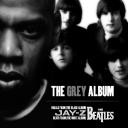sperber_on_being_a_fan.pdf
I came across this article (link is listed above) about sports fans in the Chronicle of Higher Education and thought it would make a good addition to our discussion on fandom. Considering that the term “fan” first appeared in reference to followers of professional sports teams (Jenkins, 12), I thought it would be important to bring more attention to sports fans since we haven’t paid them much attention up to this point. I also felt that we could draw a lot of parallels between the nature of sports and media fandoms, so that is what I tried to do in this post.
Murray Sperber wrote this article about the nature of sports fandom, but about collegiate sports specifically. He starts off his discussion by recounting a visit to the University of Washington, where he answered questions students had about his book, Beer and Circus: How Big-Time College Sports is Crippling Undergraduate Education. In the book, he critiqued the way in which big-time colleges and universities, such as the University of Michigan, have treated their athletic programs as professional teams rather than fostering successful student-athletes with an emphasis on the word “student.” One student in the audience, knowing that Sperber was actually a sports fan himself, asked Sperber if he was engaging in “double speak” by criticizing collegiate sports while simultaneously supporting his favorite collegiate team, the Cal Berkeley Bears. This sparked the discussion about the power of sports fandom over logic and reason and caused Sperber to look a little bit deeper into the sports fan’s psyche.
In addressing this issue of whether Sperber contradicts himself by being a fan while also critiquing the direction in which Division I athletics have been moving, I think it’s useful to remember one of Henry Jenkins’ arguments in Textual Poachers, where he argues that fans’ responses often involve “not simply fascination or adoration but also frustration and antagonism.” He goes on to say, “it is the combination of the two responses which motivates their active engagement with the media” (Jenkins, 23). Later, he quotes a Star Trek fan that says, “If we didn’t care, we wouldn’t criticize” (Jenkins, 86). This would seem to indicate that you can be both a critic and a fan at the same time, and that they are not necessarily separate entities. In fact, it seems to show that criticism is an important part of fandom since it encourages improvement in a text, team, etc, and demonstrates the fans’ deep knowledge of the object of their fandom. This is the realization that Sperber came to in his article when he admitted, “although I was a critic of big-time college sports, I was also a fan and rooted for my team.” He, like many other student sports fans seemed to “acknowledge the dysfunction of college sports while fervently following its teams and games.”
Making another link back to Jenkins’ discussion of media fandom, Jenkins notes that fans often choose certain interests “in order to facilitate greater communication with friends who share common interests or possess compatible tastes” (Jenkins, 40-41). In relation to sports fandom, this might help explain why some fans choose one sports team over another. When he asked fans how many games of their favorite team they had attended, Sperber found that many admitted that the number was zero, indicating that these fans were motivated by some other emotion and connection than the team’s performance alone. Sperber found that many of these attachments stemmed from childhood experiences and family bonding, while other fans admitted that their attachment to a team somehow connected them to positive memories of their college glory days. This would seem to prove Jenkins’ theory that many fans are motivated by the process and activities of fandom more than the central show, movie, team, etc. itself (Jenkins, 91).
So, after drawing some similarities between sports and media fans, I guess my big question is, what makes the distinction between the two types of fandom in the way they are perceived by fan culture scholars and the mainstream? Sports fans still seem to be more acceptable than media fans, even though they both engage in similar practice, so I am curious to figure out where the differences lie.
 VS.
VS.
